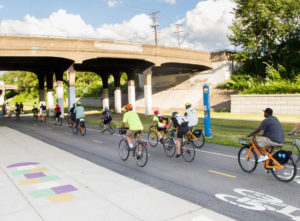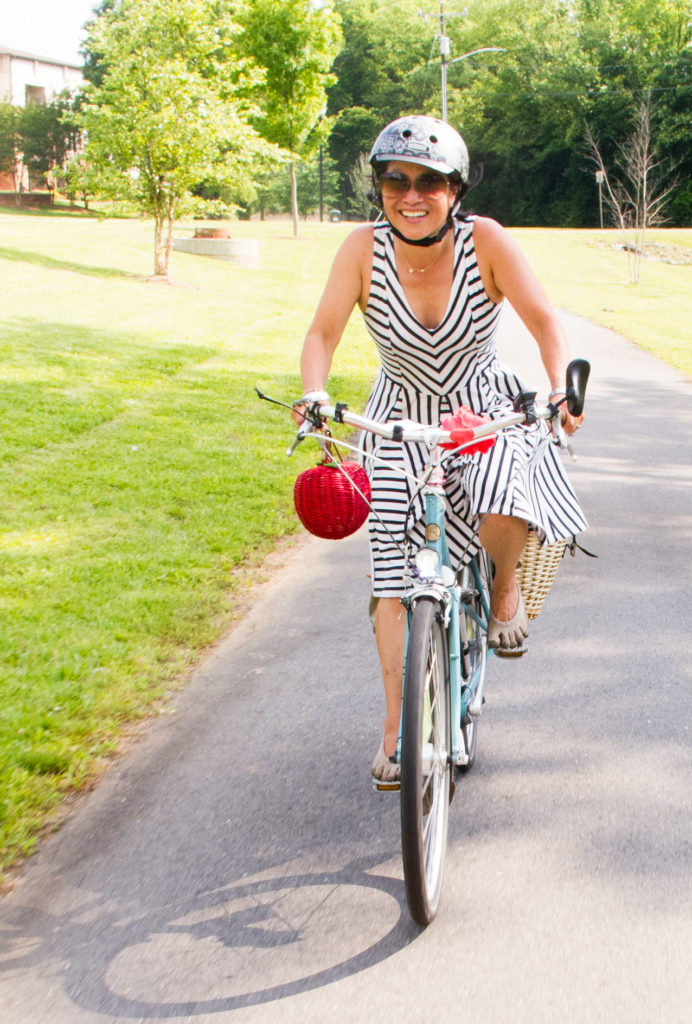
I’ve mentioned the Midtown Greenway a few times, and it’s worth talking about it because it’s really quite an impressive facility. It’s a former freight rail corridor which must have supported multiple rain lines; it’s quite wide. The rail line was trenched in 1912, so it passes through what’s now a highly developed part of the city with almost no at-grade crossings. De-industrialization led to decreasing freight traffic, and the line was abandoned in 2001.
Now, it’s been converted into a multi-use path, and it has to be one of the best in the country. Unlike the greenway in Charlotte, the Midtown Greenway has good infrastructure, good connectivity to the street grid, and at the few at-grade crossings, actually has priority over auto traffic, which is likely appropriate given the traffic levels. It connects to the pathway along the river, and provides a great augmentation to the natural bikeways found in the residential neighborhoods to the south and west.
(Side note: I’m thinking about changing my terminology; I’m liking the term, “indigenous bikeways,” in the sense of a facility that “exists naturally in a particular region or environment.”)
I did a bike count on the Midtown Greenway (over 300 bikes in 2 hours), and my notes from that day say, “If you want to feel better about the future of the world, go sit on the Midtown Greenway for two hours.” In terms of the official count I’m only distinguishing male vs. female cyclists, but experientially, the group using the Midtown Greenway is quite diverse, with lycra cyclists mingling with hipster urbanists, families with kids, and pure utility riders. I even saw a fully-faired HPV. There was ethnic, racial, and socioeconomic diversity among the users. It’s really a great facility that enlivens that area of the city (and has been predictably blamed for gentrification).
But context matters. People naturally want to emulate successful facilities, but Charlotte and North Minneapolis don’t have abandoned grade-separated rail lines to repurpose for cycling, so the facilities they’re building are shoehorned into the road network in ways that make them less accessible and less useful. North Minneapolis also has the problem that it’s too far out from anything interesting. The southern end of the the North Minneapolis Greenway is still over 3 miles from the edge of downtown, and the northern end is in a low-density and depopulating area. Even if the facility were as high-quality as the Midtown Greenway is, it wouldn’t get the same kind of traffic. A trip includes an origin, a pathway, and a destination. Pathways without destinations don’t generate trips.


